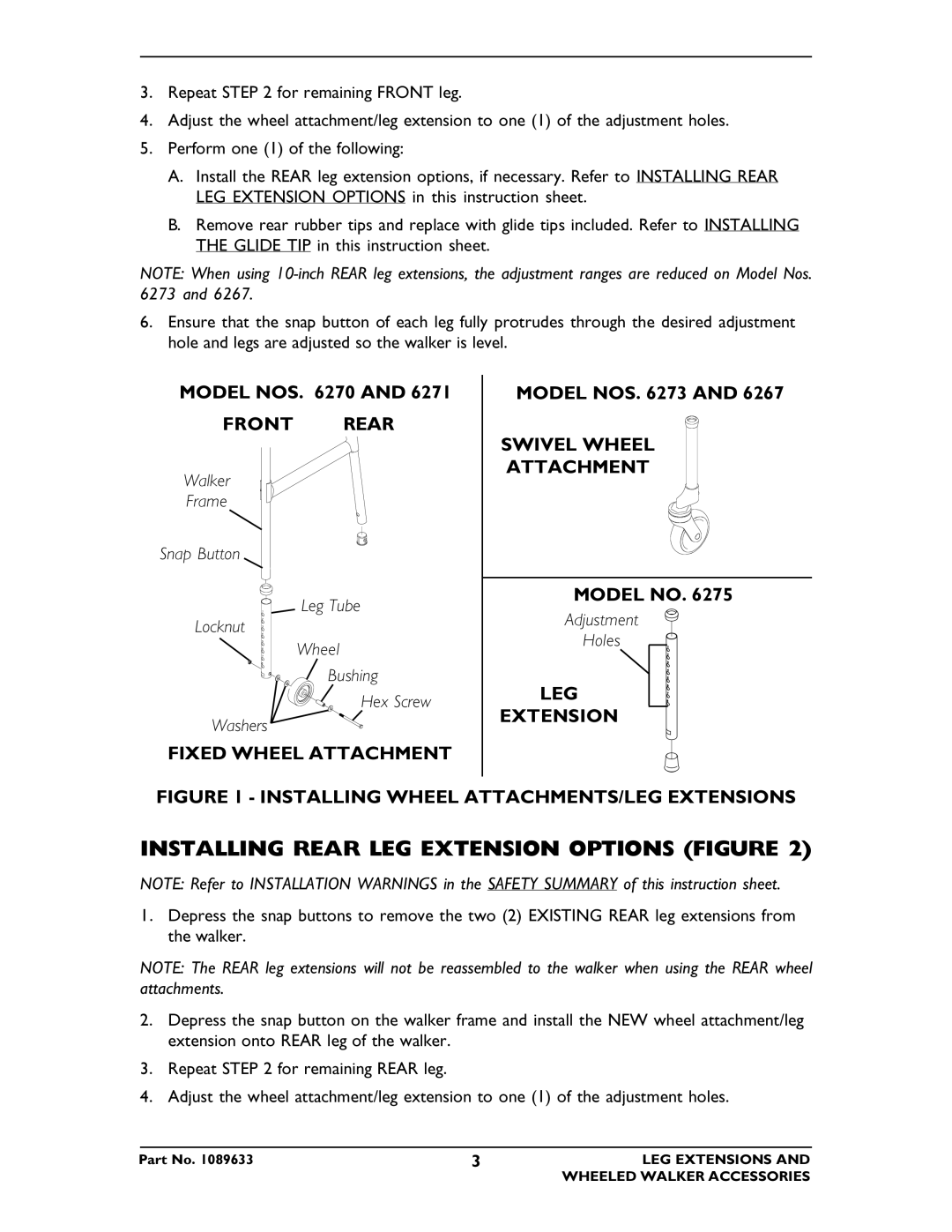6263, 6265, 6266, 6274, 6264 specifications
The Invacare 6264, 6274, 6266, 6265, and 6263 are a series of advanced pressure relief cushions designed for individuals who require enhanced comfort and support in their seating arrangements. These cushions are particularly beneficial for those at risk of developing pressure ulcers or experiencing discomfort due to prolonged periods of sitting.The primary feature of these Invacare models is their ergonomic design, which promotes optimal positioning and weight distribution. This helps to minimize pressure points, reducing the risk of skin breakdown. Incorporating a unique multi-layer construction, these cushions consist of different materials that work in synergy to deliver superior pressure relief. The top layer often features a soft, breathable fabric that enhances comfort while allowing for air circulation, keeping the user cool and dry.
Another notable characteristic of the Invacare cushions is their use of specialized foam technology. The innovative foam formulations adjust to the body’s contours, providing personalized support that caters to individual user needs. Some models come with additional gel or air-filled components that further enhance pressure relief by conforming to the user’s shape and reducing shear forces.
Stability is essential in any seating solution, and the Invacare cushions are no exception. Each model incorporates a stable base that provides robust support during transfers and movement. This stability is complemented by non-slip bottom surfaces, ensuring that the cushion remains securely in place during use.
Furthermore, the Invacare series places a strong emphasis on ease of care. The removable, washable covers make maintenance straightforward, allowing caregivers and users to keep the cushions clean and hygienic. Additionally, many of these models are available in various sizes to accommodate different seating environments, from wheelchairs to standard chairs.
Whether used in home care, long-term facilities, or hospitals, the Invacare 6264, 6274, 6266, 6265, and 6263 cushions stand out for their commitment to user comfort and safety. With a combination of advanced design, innovative materials, and practical features, they offer effective solutions for pressure management while enhancing overall user quality of life.

